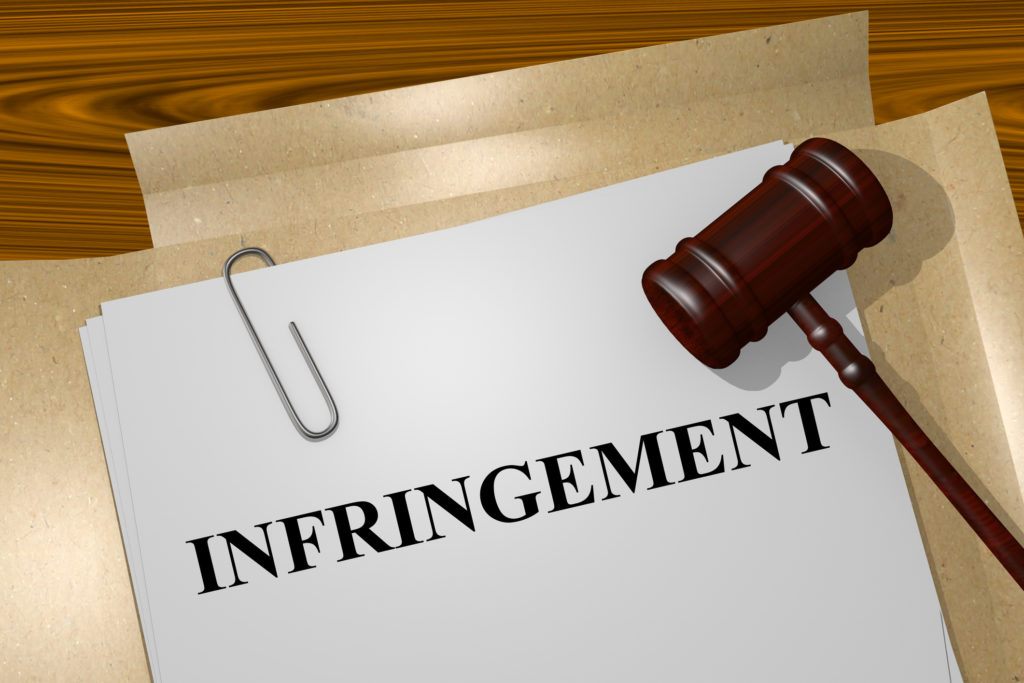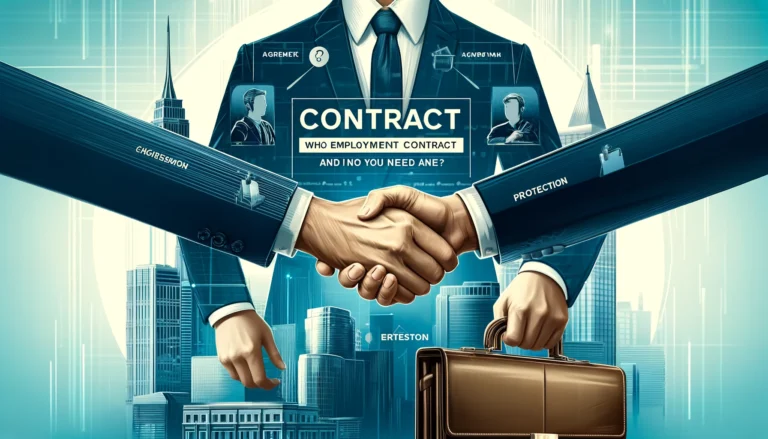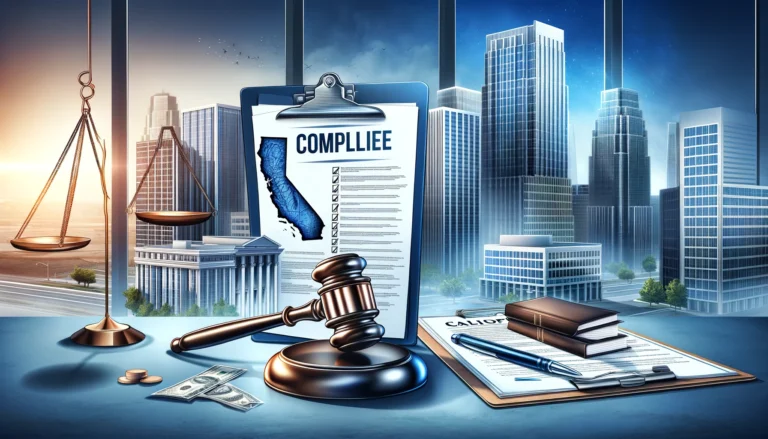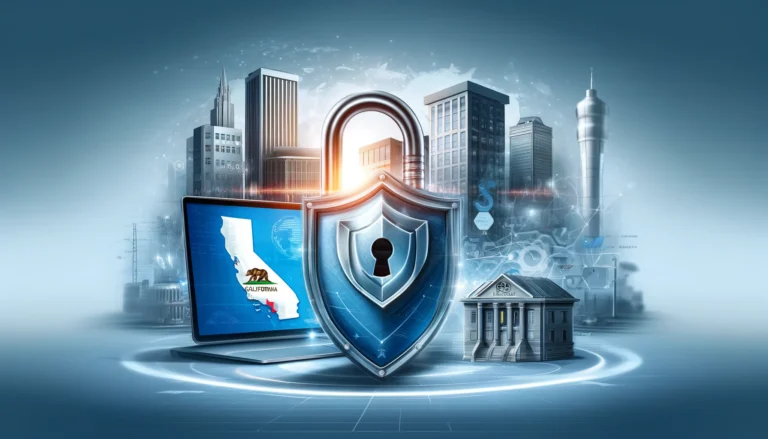Introduction
Copyright infringement stands at the intersection of creativity, ownership, and legal rights in the digital age. In its essence, copyright infringement refers to the unauthorized use, reproduction, distribution, or adaptation of creative works protected by copyright law. It represents a significant challenge in today’s interconnected world, where information and creative content flow freely across digital platforms.
At its core, copyright serves as a fundamental mechanism for fostering creativity, innovation, and cultural expression by granting creators exclusive rights to their works. These rights include the ability to reproduce, distribute, perform, and display their creations. However, with the proliferation of digital technologies and the internet, the ease of accessing and sharing copyrighted material has led to a surge in instances of infringement.
Understanding the nuances of copyright infringement is essential for creators, consumers, and businesses alike. For creators, it ensures that their intellectual property is protected, allowing them to earn recognition and financial rewards for their work. For consumers, it highlights the importance of respecting the rights of content creators and understanding the legal implications of using copyrighted material without permission. For businesses, it underscores the need for robust copyright policies and compliance measures to avoid legal liabilities and safeguard intellectual property assets.
In this comprehensive exploration of copyright infringement, we will delve into the intricacies of copyright law, the various forms of infringement, real-world examples, consequences for violators, the concept of fair use, practical tips for avoiding infringement, and the broader implications for society and culture. By gaining a deeper understanding of copyright infringement, we can navigate the complex terrain of intellectual property rights responsibly and contribute to a more equitable and sustainable creative ecosystem.
Understanding Copyright
Copyright is a legal concept that grants creators of original works exclusive rights to their creations, enabling them to control how their works are used and distributed. Rooted in the principle of intellectual property rights, copyright serves as a cornerstone of the creative economy, incentivizing innovation, promoting cultural diversity, and fostering the dissemination of knowledge.
At its core, copyright protects a wide range of creative works, including literary works, music compositions, artistic creations, films, software code, and architectural designs. These works must meet certain criteria to qualify for copyright protection, such as originality and fixation in a tangible medium of expression.
The purpose of copyright protection is twofold: to reward creators for their creative endeavors and to promote the progress of science and arts by encouraging the production of new works. By granting creators exclusive rights to their works, copyright provides them with the economic incentive to invest time, effort, and resources into the creation and dissemination of cultural and intellectual works.
The rights granted to copyright holders include the right to reproduce the work, distribute copies, perform or display the work publicly, and create derivative works based on the original. These exclusive rights enable creators to exploit their works commercially, license them to third parties, and enforce their rights against unauthorized use or infringement.
In the digital age, copyright law faces new challenges and opportunities arising from technological advancements and the proliferation of digital platforms. The ease of copying, sharing, and remixing digital content has blurred the lines between creativity and infringement, necessitating ongoing legal and policy debates on issues such as digital rights management, online piracy, and the balance between creators’ rights and public access to information.
Understanding the fundamentals of copyright is crucial for creators, consumers, educators, policymakers, and businesses operating in the digital landscape. It empowers individuals to respect intellectual property rights, navigate legal complexities, and harness the benefits of a vibrant and dynamic creative ecosystem. By promoting a culture of respect for copyright, we can uphold the principles of creativity, innovation, and cultural exchange that underpin the fabric of our society.
What is Copyright Infringement?
Copyright infringement is a legal term that refers to the unauthorized use, reproduction, distribution, adaptation, or display of copyrighted material without the permission of the copyright owner. It occurs when someone violates the exclusive rights granted to the copyright holder under copyright law, thereby depriving the creator of the ability to control and benefit from their work.
The scope of copyright infringement encompasses a wide range of actions, including:
- Reproduction: Unauthorized copying or replication of copyrighted material in any form, including print, digital, or audiovisual formats.
- Distribution: Unauthorized sharing, selling, or disseminating copies of copyrighted material to the public without the permission of the copyright owner.
- Creation of Derivative Works: Unauthorized adaptation, modification, or transformation of copyrighted material to create new works without the consent of the copyright owner.
- Public Performance or Display: Unauthorized presentation, exhibition, or performance of copyrighted material in public settings, such as theaters, concert halls, or galleries, without proper authorization.
It’s important to note that copyright infringement can occur both intentionally and unintentionally. While deliberate acts of infringement involve willful disregard for copyright law, unintentional infringement may result from ignorance of the law or misunderstanding of permissible uses of copyrighted material.
Intent plays a crucial role in determining liability in copyright infringement cases. Courts may consider factors such as the defendant’s knowledge of the copyrighted material, the extent of the unauthorized use, the harm caused to the copyright owner, and any mitigating circumstances in assessing culpability and damages.
In the digital age, copyright infringement has become increasingly prevalent due to the ease of sharing and accessing copyrighted material online. Online piracy, file-sharing networks, and peer-to-peer platforms have facilitated the unauthorized distribution of movies, music, software, and other digital content, posing significant challenges to copyright enforcement efforts.
Addressing copyright infringement requires a multifaceted approach that combines legal, technological, and educational strategies. Effective enforcement measures, such as takedown notices, digital rights management, and litigation against infringers, are essential for protecting creators’ rights and deterring unlawful behavior. Additionally, public awareness campaigns, copyright education initiatives, and promotion of legitimate sources of content can help foster a culture of respect for intellectual property rights and support the creative industries.
By understanding the complexities of copyright infringement and its implications for creators, consumers, and society as a whole, we can work towards building a fair, equitable, and sustainable creative ecosystem that rewards innovation, fosters cultural diversity, and promotes the free exchange of ideas.
Examples of Copyright Infringement
Copyright infringement manifests in various forms across different mediums and contexts. Understanding real-world examples helps illuminate the complexities and implications of infringing upon someone else’s creative work. Here are some common examples:
Plagiarism
Plagiarism involves the unauthorized use or imitation of another person’s ideas, language, or work without proper attribution. It is a form of intellectual theft that undermines the integrity of academic, journalistic, and creative endeavors. Examples of plagiarism include:
- Copying verbatim text from a source without quotation marks or citation.
- Paraphrasing or summarizing someone else’s ideas without acknowledging the original source.
- Submitting someone else’s work as one’s own, such as purchasing essays or assignments online.
Unauthorized Use of Copyrighted Material
This category encompasses a wide range of actions that involve using copyrighted material without permission from the copyright owner. Examples include:
- Using copyrighted images or photographs in presentations, websites, or social media posts without obtaining the necessary licenses or permissions.
- Reproducing excerpts from copyrighted texts, such as books, articles, or song lyrics, without authorization from the copyright holder.
- Downloading or streaming copyrighted movies, music, software, or other digital content from unauthorized sources, such as torrent websites or file-sharing networks.
- Creating derivative works, such as remixes, mashups, or fan fiction, based on copyrighted material without obtaining proper licenses or permissions.
Commercial Use of Copyrighted Material
Commercial exploitation of copyrighted material without the consent of the copyright owner constitutes copyright infringement. Examples include:
- Selling counterfeit merchandise, such as fake designer goods or unauthorized reproductions of branded products.
- Distributing pirated copies of movies, music albums, video games, or software for profit without authorization from the copyright holders.
- Using copyrighted logos, trademarks, or brand names to advertise or promote products or services without obtaining the necessary licenses or permissions.
Online Piracy and Digital Copyright Infringement
The proliferation of the internet and digital technologies has facilitated the widespread distribution and sharing of copyrighted material without proper authorization. Examples of online piracy and digital copyright infringement include:
- Uploading or sharing copyrighted movies, TV shows, music albums, ebooks, or software on file-sharing websites or peer-to-peer networks without permission from the copyright owners.
- Streaming copyrighted content from unauthorized sources, such as illegal streaming websites or IPTV services, without proper licenses or subscriptions.
- Posting copyrighted photographs, artwork, or other creative works on social media platforms or websites without the consent of the copyright holders.
- Downloading or distributing copyrighted software, games, or apps from unauthorized sources, such as cracked software websites or app repositories.
These examples illustrate the diverse ways in which copyright infringement can occur and highlight the importance of respecting intellectual property rights in a digital age. By recognizing and addressing copyright infringement in its various forms, we can uphold the principles of creativity, innovation, and fair compensation for creators, while also fostering a culture of respect for intellectual property rights.
Consequences of Copyright Infringement
Copyright infringement carries significant legal, financial, and reputational consequences for individuals, businesses, and organizations involved. Understanding these consequences is essential for deterring unlawful behavior and promoting compliance with copyright law. Here are some of the key repercussions of copyright infringement:
Legal Penalties
Copyright infringement can lead to both civil and criminal penalties under copyright law. Civil penalties typically involve lawsuits filed by the copyright holder seeking monetary damages, injunctions to stop the infringing activity, and legal fees. The damages awarded in copyright infringement cases may include actual damages suffered by the copyright owner and statutory damages, which can range from hundreds to thousands of dollars per infringed work.
In cases of willful infringement or commercial exploitation of copyrighted material, the infringer may face criminal charges, prosecution by law enforcement authorities, and potential imprisonment. Criminal penalties for copyright infringement may include fines, forfeiture of infringing materials, and imprisonment for up to several years, depending on the severity of the offense.
Financial Repercussions
Copyright infringement can result in substantial financial losses for both the infringer and the copyright holder. In addition to paying damages to the copyright owner, infringers may incur legal fees, court costs, and other expenses associated with defending against copyright infringement lawsuits. For businesses and organizations found liable for copyright infringement, the financial consequences may include loss of revenue, damage to reputation, and potential bankruptcy.
Moreover, copyright infringement undermines the economic incentives for creators to produce new works, stifling innovation, creativity, and investment in the creative industries. By depriving creators of rightful compensation for their intellectual property, copyright infringement undermines the integrity of the copyright system and erodes the foundation of the creative economy.
Impact on Reputation and Career
Copyright infringement can have long-lasting effects on the reputation and career prospects of individuals, businesses, and organizations involved. For creators, being associated with copyright infringement can tarnish their professional reputation, damage relationships with collaborators and industry partners, and hinder future opportunities for recognition and success.
Similarly, businesses and organizations found liable for copyright infringement may suffer reputational harm, loss of consumer trust, and negative publicity that can impact their bottom line and market viability. In today’s interconnected world, where information spreads rapidly through social media and online platforms, allegations of copyright infringement can quickly damage brand reputation and lead to public backlash.
Furthermore, repeated instances of copyright infringement may result in legal injunctions, court orders, or settlements that impose restrictions on the infringer’s activities, such as cease-and-desist orders, compliance monitoring, or ongoing payment of royalties to the copyright owner.
In summary, copyright infringement carries severe consequences that extend beyond legal penalties to encompass financial losses, reputational damage, and constraints on future opportunities for creators, businesses, and organizations. By understanding and respecting copyright law, individuals can contribute to a fair, equitable, and sustainable creative ecosystem that fosters innovation, rewards creativity, and promotes the free exchange of ideas.
Fair Use and Copyright Infringement
Fair use is a legal doctrine that allows for the limited use of copyrighted material without permission from the copyright owner under certain circumstances. It serves as a critical exception to copyright law, balancing the rights of creators with the public’s interest in accessing and using copyrighted works for purposes such as criticism, commentary, scholarship, research, teaching, and news reporting.
The concept of fair use is codified in copyright law, specifically in the United States under Section 107 of the Copyright Act, and in various other jurisdictions around the world. While the criteria for determining fair use may vary depending on the jurisdiction and context, several common factors are typically considered in evaluating whether a particular use of copyrighted material qualifies as fair use:
Purpose and Character of the Use
One of the primary factors in determining fair use is the purpose and character of the use. Courts assess whether the use is transformative, meaning it adds new expression, meaning, or message to the original work, or whether it merely duplicates the original for commercial gain. Nonprofit, educational, or transformative uses are more likely to be considered fair use than commercial or verbatim reproductions.
Nature of the Copyrighted Work
Courts consider the nature of the copyrighted work in evaluating fair use. Works that are factual, informational, or published are generally more susceptible to fair use than highly creative or unpublished works. However, this factor is not determinative, and fair use may still apply to a wide range of creative works depending on the circumstances.
Amount and Substantiality of the Portion Used
The amount and substantiality of the portion used in relation to the copyrighted work as a whole is another critical factor in fair use analysis. Courts consider both the quantity and qualitative significance of the portion used relative to the entire work. While using small excerpts or portions of a work may weigh in favor of fair use, extensive or substantial use may tip the balance in favor of infringement.
Effect on the Potential Market or Value
Finally, courts examine the effect of the use on the potential market or value of the copyrighted work. If the use negatively impacts the marketability or value of the original work, it is less likely to be considered fair use. Factors such as commercial competition, market substitution, and potential market harm are taken into account in assessing the economic impact of the use.
It’s important to note that fair use is a flexible and context-sensitive doctrine that requires a case-by-case analysis based on the specific facts and circumstances of each situation. While certain uses of copyrighted material may be deemed fair under one set of circumstances, the same uses may be considered infringing under different conditions.
Examples of fair use include:
- Quoting excerpts from a book in a book review or scholarly analysis.
- Using copyrighted images or artwork in a news report or documentary for purposes of commentary or criticism.
- Parodying or satirizing copyrighted material to create new works with social or political commentary.
- Repurposing copyrighted content for transformative purposes, such as remixes, mashups, or memes that add new meaning or context to the original work.
While fair use provides important exceptions to copyright law, it’s essential to exercise caution and consider the potential legal risks when relying on fair use for using copyrighted material. Ultimately, fair use is a nuanced legal doctrine that requires careful consideration of the specific circumstances and factors involved to determine its applicability in any given situation.
How to Avoid Copyright Infringement
Avoiding copyright infringement requires awareness, diligence, and respect for intellectual property rights. Whether you’re a creator, consumer, educator, or business owner, following best practices and adhering to copyright law is essential for promoting a culture of legality, creativity, and innovation. Here are some practical tips for avoiding copyright infringement:
Understanding Copyright Laws
Educate yourself about the basics of copyright law, including the rights granted to copyright holders, the duration of copyright protection, and the limitations and exceptions to copyright, such as fair use or the public domain. Familiarize yourself with relevant copyright statutes and regulations in your jurisdiction, as copyright laws may vary from country to country.
Obtaining Permission to Use Copyrighted Material
Seek permission from the copyright owner before using or reproducing copyrighted material in your own work. This may involve obtaining a license, clearance, or written consent from the copyright holder, especially for commercial or for-profit uses. Be sure to clearly specify the scope and terms of the permission granted, including any limitations on use, duration, or distribution.
Creating Original Content
Whenever possible, strive to create original works that are not derived from or based on existing copyrighted material. By generating your own content, you can avoid the risk of infringing on others’ intellectual property rights and assert your own creative identity. Embrace your unique perspective, voice, and style to produce original works that resonate with your audience.
Properly Attributing Sources
When incorporating third-party content into your work, such as quotes, images, or music, ensure proper attribution and citation to give credit to the original creators. Include accurate and complete references to the sources of copyrighted material used, including the name of the creator, title of the work, source or publication, and copyright notice, if applicable. Proper attribution not only acknowledges the contributions of others but also demonstrates integrity and transparency in your own work.
Seeking Legal Advice When Unsure
If you’re uncertain about whether your use of copyrighted material constitutes infringement or fair use, seek guidance from legal professionals, such as copyright attorneys or intellectual property specialists. Consulting with legal experts can help clarify legal issues, assess potential risks, and explore alternative strategies for using copyrighted material in compliance with copyright law.
By following these tips and best practices, you can minimize the risk of copyright infringement and foster a culture of respect for intellectual property rights in your creative endeavors. Whether you’re creating, consuming, or distributing content, upholding the principles of legality, ethics, and responsibility is essential for promoting a vibrant, diverse, and sustainable creative ecosystem.
Conclusion
In conclusion, copyright infringement is a complex and multifaceted issue that intersects with creativity, innovation, and legal rights in the digital age. As we’ve explored throughout this discussion, copyright infringement refers to the unauthorized use, reproduction, distribution, or adaptation of copyrighted material without the permission of the copyright owner.
Understanding the nuances of copyright law and respecting intellectual property rights are essential for creators, consumers, educators, businesses, and policymakers alike. By adhering to copyright laws and best practices, individuals can promote a culture of legality, creativity, and innovation that benefits creators, consumers, and society as a whole.
Throughout this exploration, we’ve examined various aspects of copyright infringement, including its definition, examples, consequences, fair use, and strategies for avoidance. We’ve learned that copyright infringement can have significant legal, financial, and reputational repercussions for individuals, businesses, and organizations involved, underscoring the importance of compliance with copyright law.
Moreover, we’ve explored the concept of fair use as a critical exception to copyright law, providing flexibility for certain uses of copyrighted material for purposes such as criticism, commentary, scholarship, research, teaching, and news reporting. Understanding the principles of fair use and applying them judiciously can help individuals navigate the complexities of copyright law while promoting the free exchange of ideas and information.
Ultimately, by fostering a culture of respect for intellectual property rights, we can create a fair, equitable, and sustainable creative ecosystem that rewards innovation, fosters cultural diversity, and promotes the free expression of ideas. Whether you’re a creator, consumer, educator, or business owner, your actions play a crucial role in shaping the future of copyright and the creative industries.
As we move forward, let us continue to uphold the principles of legality, ethics, and responsibility in our creative endeavors, recognizing the value of intellectual property rights in fueling innovation, fostering creativity, and enriching our collective cultural heritage. By working together to promote respect for copyright and intellectual property, we can build a brighter, more vibrant, and more inclusive creative future for generations to come.





